I go down a few steps and already can feel this fine, soft sand under my toes. For miles, the Pasir Panjang (the Long Beach) extends in front of our terrace from south to north. And the best thing is: you are completely alone. Every now and then a native - usually standing - passes by in his canoe and in the jungle behind our homestay we can hear the birds singing, which are unfortunately hard to spot in the dense foliage. In the evening, just before sunset, the few guests meet on the beach and watch the sun plunging into the sea in the west.
Can this still be the case in Indonesia, where everywhere in the media there is talk about polluted beaches? Yes, it is true indeed and actually I should not even write about this place, because the consequences of unbridled tourism can be studied in many places in Indonesia. And the Kei Islands in the far east of Indonesia could eventually face a similar fate as Bali or the Gili Islands.
Can this still be the case in Indonesia, where everywhere in the media there is talk about polluted beaches? Yes, it is true indeed and actually I should not even write about this place, because the consequences of unbridled tourism can be studied in many places in Indonesia. And the Kei Islands in the far east of Indonesia could eventually face a similar fate as Bali or the Gili Islands.
The Kei Islands
But it is not that far yet. Every year, only a manageable number of tourists visit the Kei islands. Nowadays it is no more that difficult to come here than it used to be. Since 2014, Kei Kecil has a new airport, where big planes can land. Even Garuda flies daily from Ambon to Kei. In about 7 hours you can reach these islands from Jakarta. That is not so bad for Indonesian standards. The airport is only a 30 minutes ride away from Pasir Panjang. Also after 2014 the government has built a huge motorway from the airport to the beach. Of course, that already hints at evil. In my mind's eye, I already see the big hotels on the Pasir Panjang soaring into the sky. But it is not that far yet. On the contrary, there are only a handful of basic accommodations at the Pasir Panjang and even in Tual - the capital of the island - you will not find high-end hotels.
The Kei archipelago belongs to the southeastern Moluccas and consists of 250 different islands and islets. Of some importance, however, are only the three major islands Kei Kecil, Kei Dullah and Kei Besar. The island capital is Tual on Kei Dullah, which is connected to the neighboring town of Langgur on Kei Kecil by a bridge. Here the big Pelni ferries arrive. The new airport is further south. Kei Kecil is in contrast to the larger neighboring island Kei Besar rather flat and consists mainly of coralline lime. Especially on the west and south coast you will find many long sandy beaches and islands.
Kei Besar, the east-facing, larger neighbor island is not developed at all for tourism. But its location on the edge of a more than 2000m deep sea basin, could make this island quite interesting for divers. Unfortunately, there are no diving centers on Kei Besar.
The Kei archipelago belongs to the southeastern Moluccas and consists of 250 different islands and islets. Of some importance, however, are only the three major islands Kei Kecil, Kei Dullah and Kei Besar. The island capital is Tual on Kei Dullah, which is connected to the neighboring town of Langgur on Kei Kecil by a bridge. Here the big Pelni ferries arrive. The new airport is further south. Kei Kecil is in contrast to the larger neighboring island Kei Besar rather flat and consists mainly of coralline lime. Especially on the west and south coast you will find many long sandy beaches and islands.
Kei Besar, the east-facing, larger neighbor island is not developed at all for tourism. But its location on the edge of a more than 2000m deep sea basin, could make this island quite interesting for divers. Unfortunately, there are no diving centers on Kei Besar.
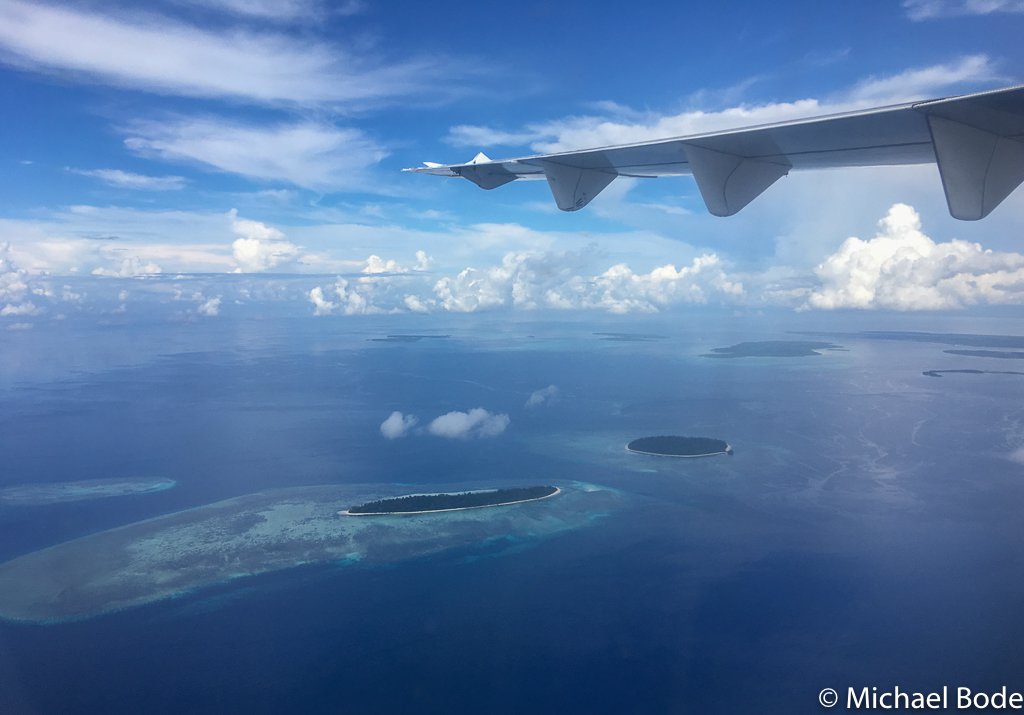
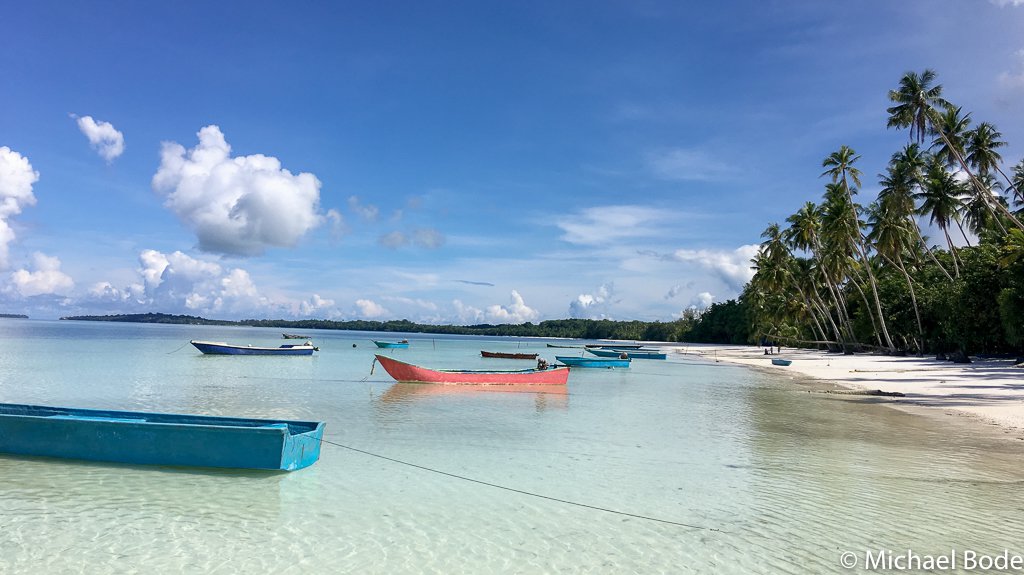

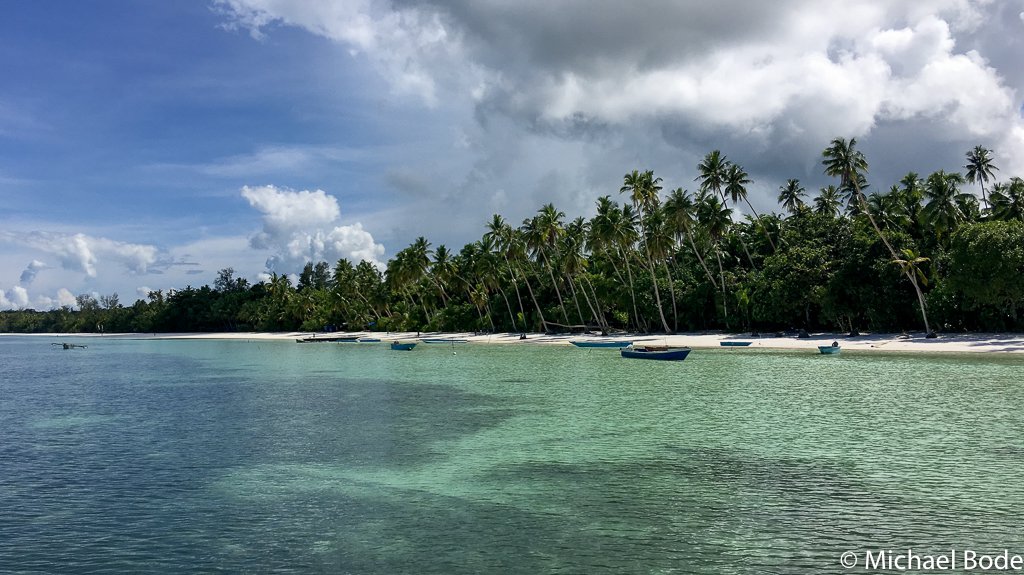
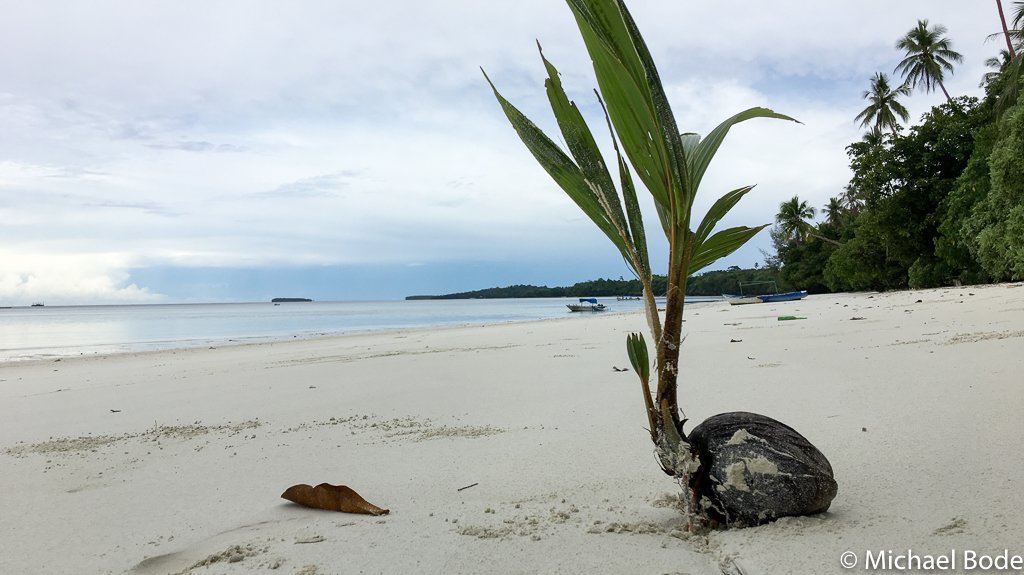

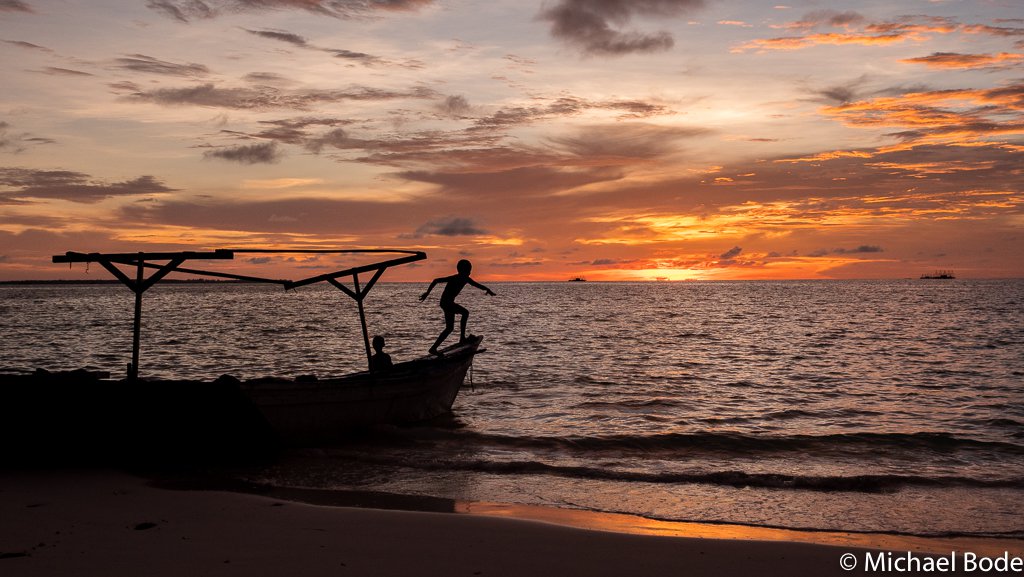
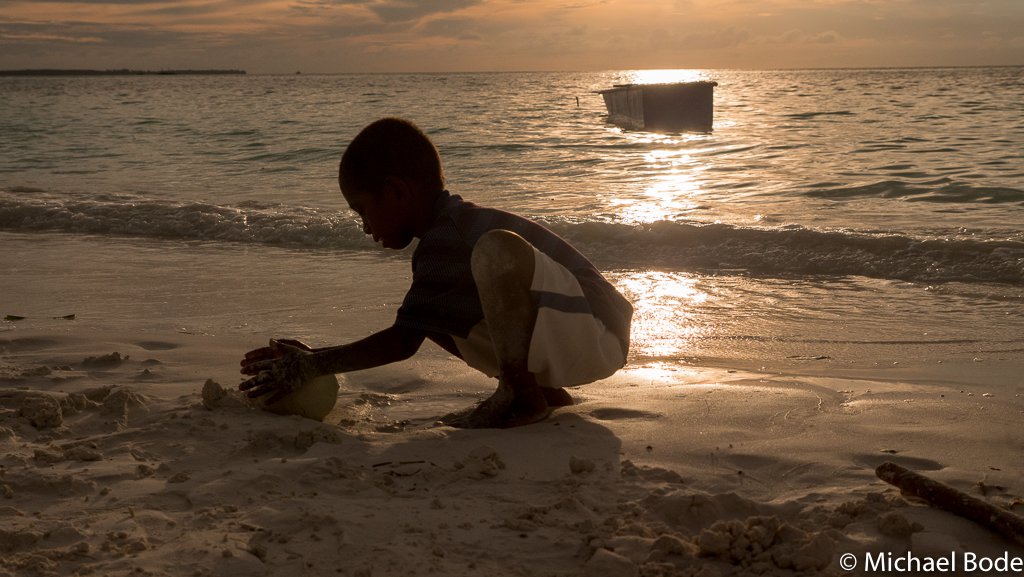
Living near the beach
Therefore, the entire tourism on the Kei Islands takes place on Kei Kecil. But there are only accommodations in Tual and on the already mentioned "long beach", the Pasir Panjang in significant numbers.
And indeed the overwhelming majority of visitors to the Kei Islands are attracted to this beach, so at peak times it can be quite difficult to find empty bed here.
Most of the accommodations are very simple wooden huts, some with community sanitary facilities. Only a few have a better standard and are equipped with Indonesian mandi and toilet.
And indeed the overwhelming majority of visitors to the Kei Islands are attracted to this beach, so at peak times it can be quite difficult to find empty bed here.
Most of the accommodations are very simple wooden huts, some with community sanitary facilities. Only a few have a better standard and are equipped with Indonesian mandi and toilet.

Coaster Cottages, Veranda
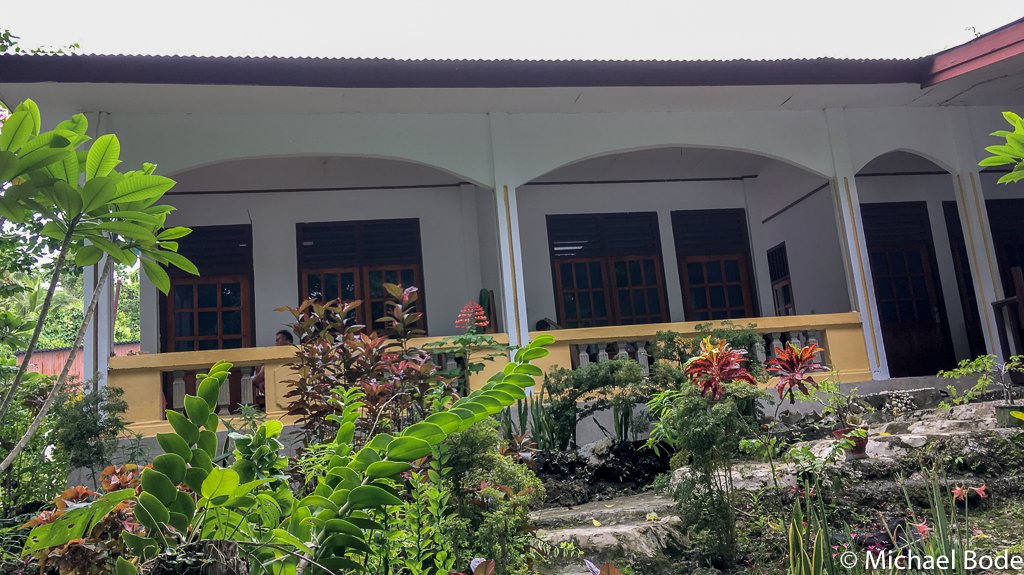
Coaster Cottages, Rooms
If you are not staying at Coaster, you can try Savanna Cottages in Ohoidertawun or check with Johanna's bungalow at the southern end of the Pasir Panjang. These accommodations also offer full board for their guests.
Getting around
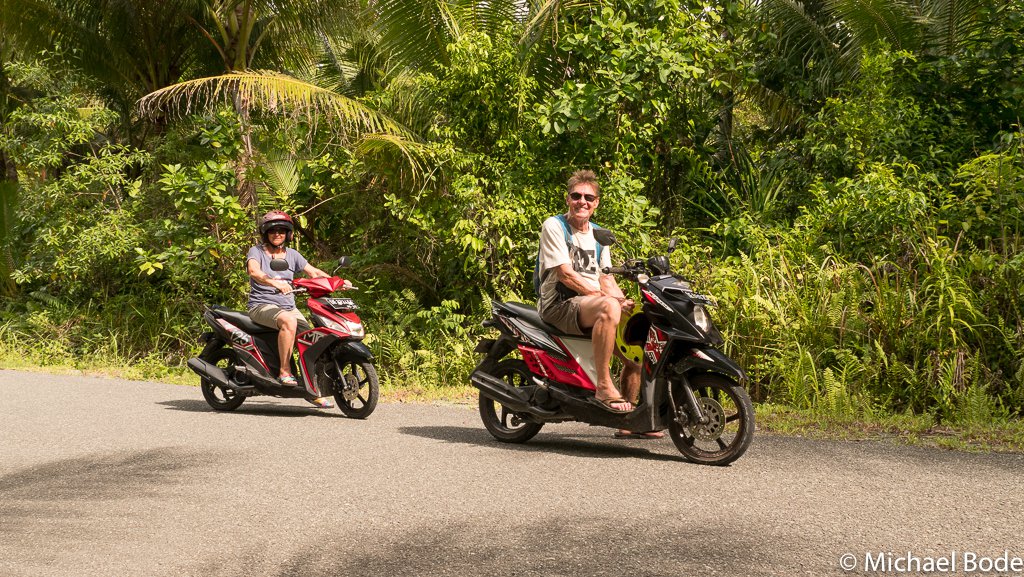
Kei Islands: Discoveries on your own
In all homestays you can rent scooters for little money.
Since there is very little traffic on Kei Kecil - with the exception of Tual and the surrounding area - this is an ideal way to explore the island on once own.
In addition, the homestays also provide Bemos or cars with drivers, which can be rented for half or full day.
If you want to visit the offshore islands, you can rent a boat. That can be quite expensive. That's why it makes sense to team up with other guests on such excursions. In any case, extensive bargaining and a clear description of the details of the excursion is advisable!
If you want to visit the offshore islands, you can rent a boat. That can be quite expensive. That's why it makes sense to team up with other guests on such excursions. In any case, extensive bargaining and a clear description of the details of the excursion is advisable!
Discoveries on the Kei Islands
Walks, hiking
Of course, beach walks and snorkeling in the turquoise waters of the long beach are at the top of the to-do list. This should be done early in the morning or in the late afternoon. Otherwise it can get pretty hot in the blazing sun.The forest behind the beach is full of beaten tracks where you can go on a discovery tour. With a little luck, you might spot parrots, lizards, many butterflies and maybe a couscous. But you should also take insect repellent. As everywhere in the Moluccas, there is some danger of catching Malaria or Dengue fever.
Cave Goa Hawang
There are several caves in the region around the village Debut. The best known is Goa Hawang with a freshwater basin at its lowest point. The place is also a popular destination for the locals. So rather avoid a visit during the weekend. Do not forget: take mosquito repellent with you. The mosquitoes love the humid climate of the cave. Very close to the village of Evu there is the only swimming pool on Kei and even a waterfall.Rock paintings
At low tide you can visit rock paintings near Savanna Cottages on rocks about 5 m above the beach..The secret lagoon
You can visit the Secret Lagoon (Ngilgnof teluk) in the north of the Pasir Panjang either by boat or as part of a longer walk. Here you will find mangrove forest and remains of the once existing lowland jungle.By boat
Many destinations on the Kei islands are only accessible by boat. Popular destinations include Snake Island (Pulau Ngurtafur) and Pulau Baeer. On Snake Island there is the chance to watch pelicans in the late afternoon in March / April. By the way, snakes are less likely here. The island's name derives from the form of beach, which runs out in snake form. When the time is right and the sun is shining this is a place to make impressive fotos.Pulau Baeer, mostly written Pulau Bair, is located in the north of Kei Dullah and is a karst landscape that resembles the landscapes you fin in Raja Ampat. Through canals with turquoise water you reach a small beach with picnic facilities. I recommend doing this tour with the Pirate Divers. You then do two dives in the area and visit the Baeer Islands during the surface interval.
Kei Besar
The large neighboring island Kei Besar offers topographically a completely different picture than Kei Kecil. It is mountainous, wild, heavily wooded and even less developed than Kei Kecil. The island is supposed to be a very good area for bird watching. There are currently no tourist accommodations. You will have to stay with the locals. From Kei Dullah there are daily ferries to Kei Besar.Kei Pirate Divers offer day trips with two dives to Kei Besar.
Let's go into the city
Tual and Langgur are connected by a bridge. Here you go for shopping. Especially the market in Tual is worth a visit. The stalls are overflowing with fruits, vegetables and fish and the people are friendly and unobtrusive. Photographers will find here rewarding motifs every few steps. From Langgur you have a beautiful view of the colorfully painted houses of Tual from the bridge. This is a popular photo opportunity.Tual has fast 4G Internet. So check your emails while visiting the city!
Gallery: Discoveries on the Kei Islands
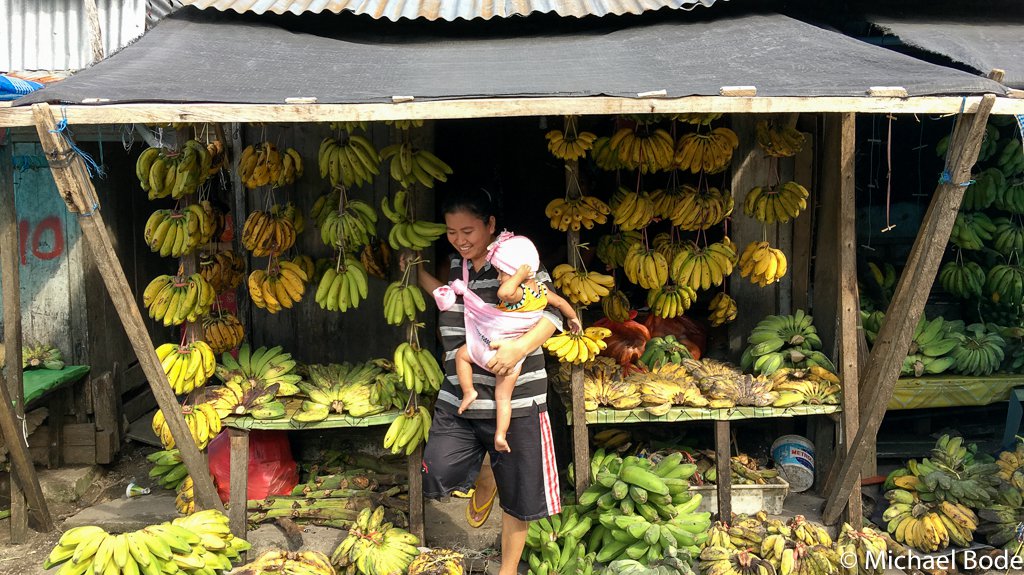
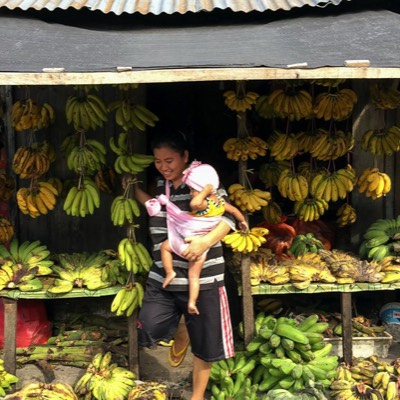
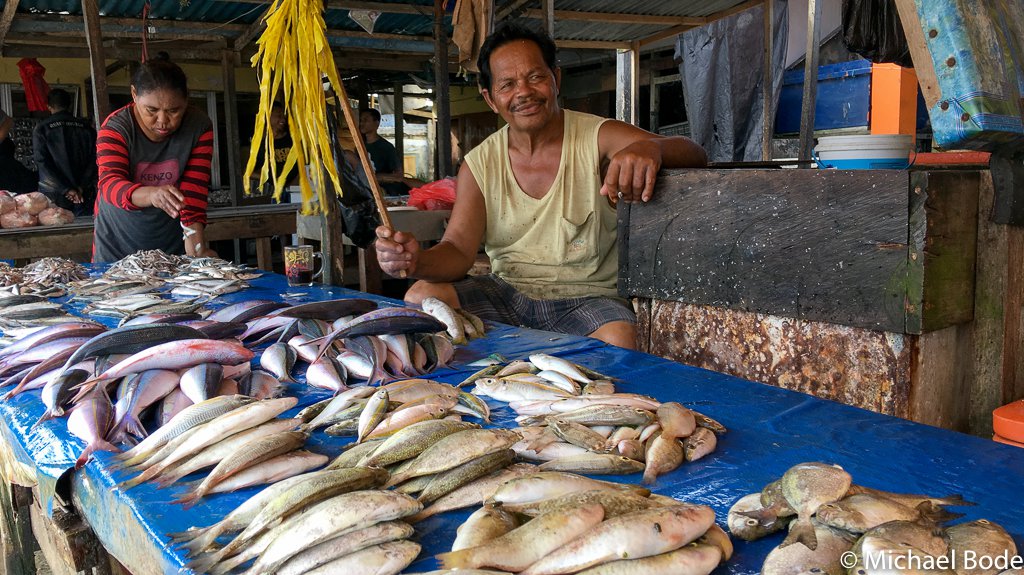
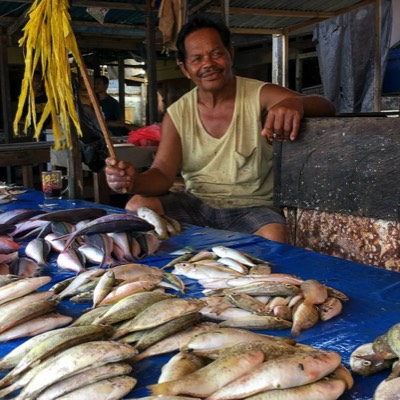

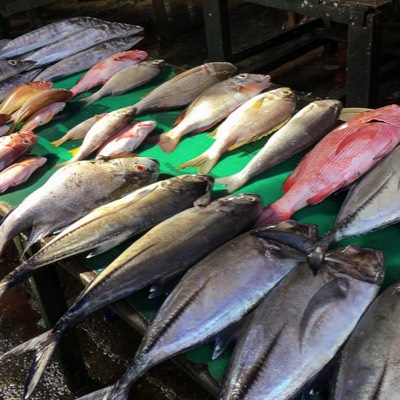

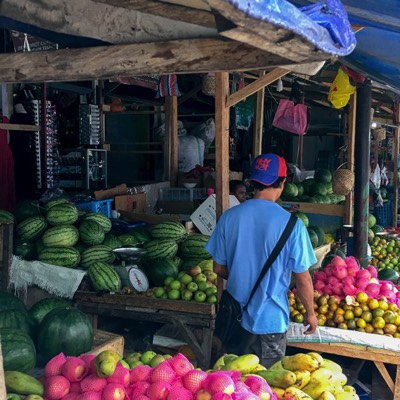


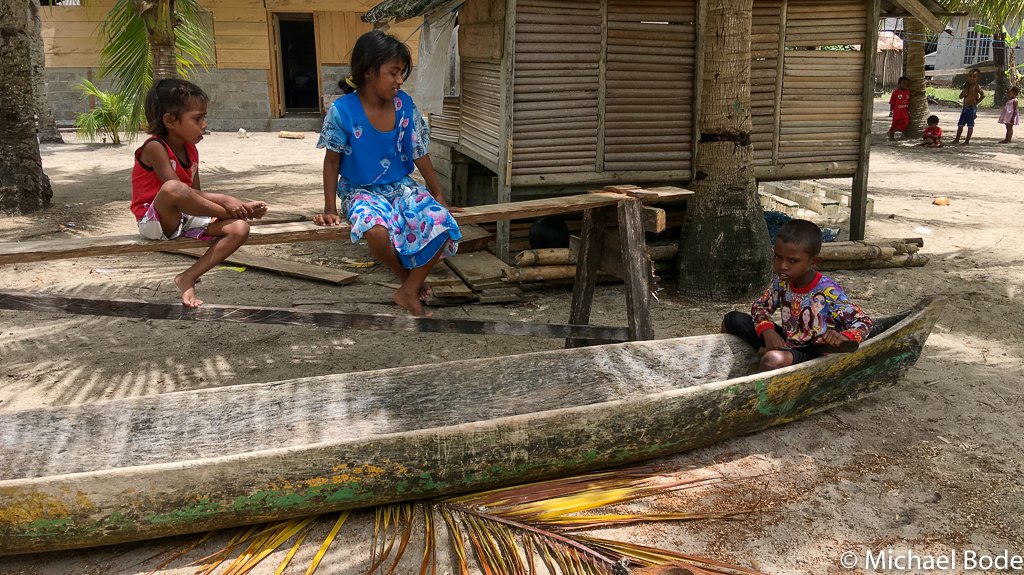
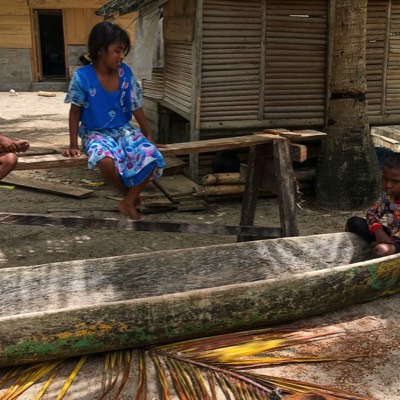

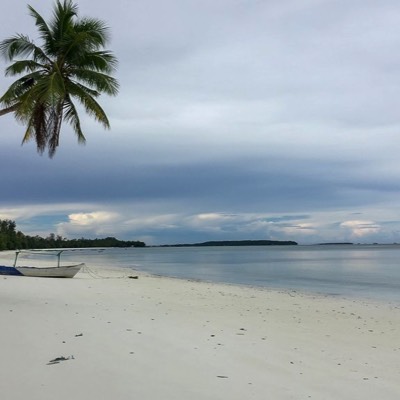
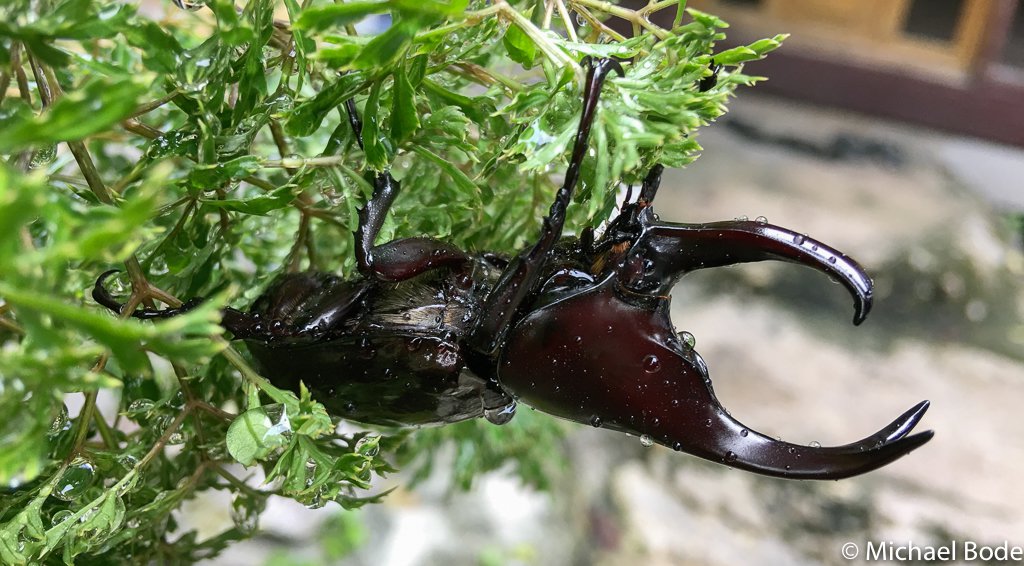
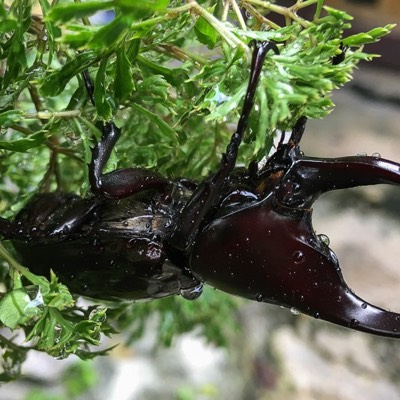

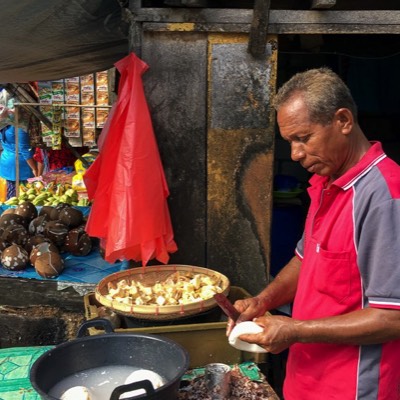
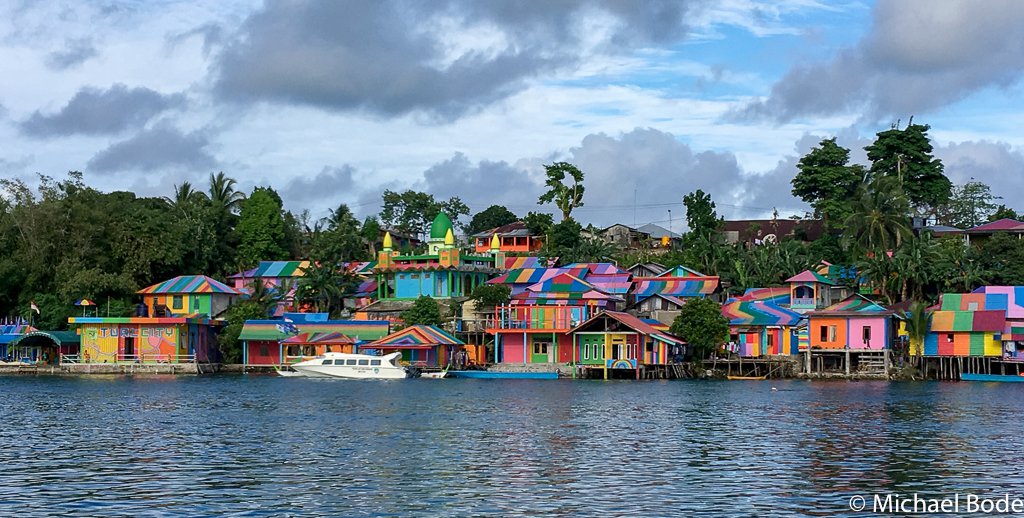
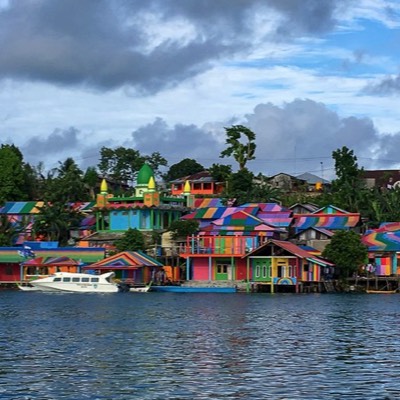
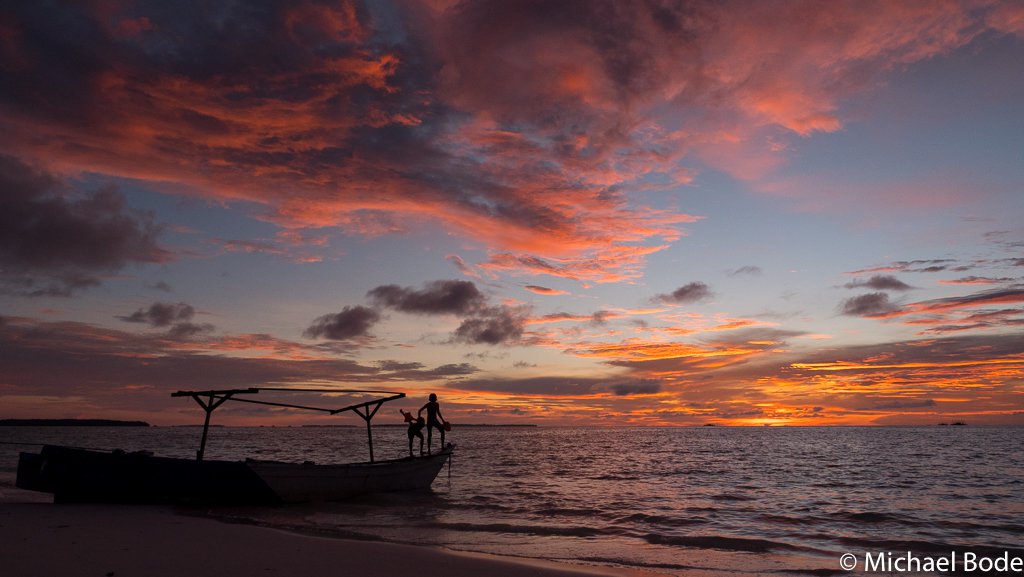
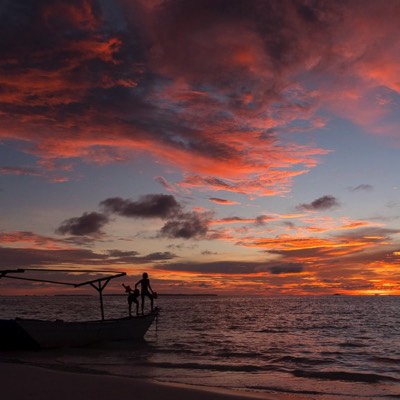
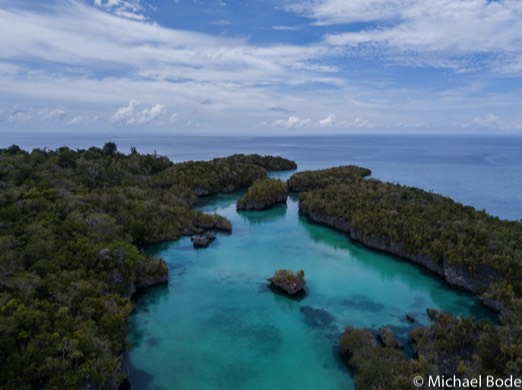
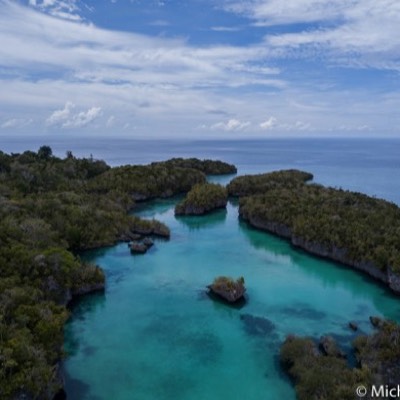




Diving the Kei Islands
The Kei islands border to the west to the over 7000m deep Banda Sea, to the east they are only seperated by a relatively narrow deep-water ditch from the extremely shallow Arafura Sea, which once formed a land bridge between New Guinea and Australia. Towards the west, the sea at firstis relatively shallow, until the seabed drops steeply into the Banda Sea after about 70 km. The deepest point of the Banda Sea, the Weber Depth with 7440m, lies only approximately 120 km to west of the Kei islands. So these islands are actually the summit plateau of a high underwater mountain range, rising from the depths of the Banda Sea.
Located in the middle of the Coral Triangle, the marine biodiversity is correspondingly high. One finds here the typical representatives of the maritime fauna of eastern Indonesia. Hard corals thrive in the shallow waters magnificently and where there is current, you can also admire beautiful soft corals. Pelagics also show up, bull sharks, have been spotted several times during dives. Even leatherback turtles have been seen during the dives. In the south of Kei Kecil there are beaches where these up to 700 kg heavy animals lay their eggs. Since 2012, these areas have been declared protected areas and the WWF is engaged with volunteers.
The equation: remote dive area = great diving has never been correct and this is especially true for the Kei islands.
It was their remote location which delivered this group of islands in the 90s into the hands of the Asian living fish mafia. Large motherships with an army of fiberglass boats equipped with compressors and hired divers from other parts of Indonesia made their way to the Kei Islands and caught fish with cyanide, especially groupers and napoleon fish.
The Kei Islands exported up to 10 tons of live fish per month for the markets in Jakarta, Singapore and Hong Kong. As a result of this unbridled poisoning of the sea with cyanide, the corals died in the fishing areas.
Again and again violent clashes with the local fishermen occured who tried to protect their own fishing areas. Cyanid fishermen were beaten, their equipment confiscated and finally handed over to the police. But most of the time, a call in Jakarta was enough to free the poachers. The local fishermen fought a losing battle.
In 1996, the live fish mafia suddenly withdrew from the Kei Islands - probably the whole effort no longer paid off. Cyanid fishermen, who got stranded on the Kei islands continued to destroy the reefs on a local scale until the beginning of 2000 without little hindrance.
Fortunately, cyanide fishery could not push through in all parts of the Kei Islands. In particular, in the north and east of Kei Besar, the resistance of some tribal leaders prevented them to carry out their destructive work. A good overview of this period of exploitation of the Kei Islands' maritime resources can be found here.
Today, cyanide fishing on the Kei Islands is still not completely eradicated. It still takes place occasionally. However, the pressure of government authorities and the public on the remaining cyanide fishermen has increased. Even the police do not look away as they used to. After all, the Kei Islands are now looking forward to develop into a tourist hotspot in Indonesia. Of course cyanide fishing now no longer fits into the picture.
The small dive center is equipped with everything divers need in this remote area. Rental equipment is available, oxygen and even NITROX is available. The group size is limited to a maximum of 4 divers. Beginners and advanced divers dive on different boats. The dive boats are made of fiberglass, have no sunscreen and provide enough space for 4 divers plus guides.
There are two, sometimes three, daily trips to the dive sites near Pasir Panjang. If the dive sites are located further out, the surface break is spent on the beach of an uninhabited island with coffee / tea and biscuits. At dive sites nearby, the break is spent on the wooden deck of the dive center. On request, a third dive can be booked in the late afternoon or as a night dive. Most dive sites can be reached in 15-30 minutes.
Excursions to more remote dive sites in the north of Kei Dullah (Little Raja Ampat) and even to Kei Besar can also be organized. However, this must be planned and discussed one or two days in advance.
Located in the middle of the Coral Triangle, the marine biodiversity is correspondingly high. One finds here the typical representatives of the maritime fauna of eastern Indonesia. Hard corals thrive in the shallow waters magnificently and where there is current, you can also admire beautiful soft corals. Pelagics also show up, bull sharks, have been spotted several times during dives. Even leatherback turtles have been seen during the dives. In the south of Kei Kecil there are beaches where these up to 700 kg heavy animals lay their eggs. Since 2012, these areas have been declared protected areas and the WWF is engaged with volunteers.
Cyanid Fishing
So the Kei islands have a great diving potential. Unfortunately, there is also a downside to the medal.The equation: remote dive area = great diving has never been correct and this is especially true for the Kei islands.
It was their remote location which delivered this group of islands in the 90s into the hands of the Asian living fish mafia. Large motherships with an army of fiberglass boats equipped with compressors and hired divers from other parts of Indonesia made their way to the Kei Islands and caught fish with cyanide, especially groupers and napoleon fish.
The Kei Islands exported up to 10 tons of live fish per month for the markets in Jakarta, Singapore and Hong Kong. As a result of this unbridled poisoning of the sea with cyanide, the corals died in the fishing areas.
Again and again violent clashes with the local fishermen occured who tried to protect their own fishing areas. Cyanid fishermen were beaten, their equipment confiscated and finally handed over to the police. But most of the time, a call in Jakarta was enough to free the poachers. The local fishermen fought a losing battle.
In 1996, the live fish mafia suddenly withdrew from the Kei Islands - probably the whole effort no longer paid off. Cyanid fishermen, who got stranded on the Kei islands continued to destroy the reefs on a local scale until the beginning of 2000 without little hindrance.
Fortunately, cyanide fishery could not push through in all parts of the Kei Islands. In particular, in the north and east of Kei Besar, the resistance of some tribal leaders prevented them to carry out their destructive work. A good overview of this period of exploitation of the Kei Islands' maritime resources can be found here.
Today, cyanide fishing on the Kei Islands is still not completely eradicated. It still takes place occasionally. However, the pressure of government authorities and the public on the remaining cyanide fishermen has increased. Even the police do not look away as they used to. After all, the Kei Islands are now looking forward to develop into a tourist hotspot in Indonesia. Of course cyanide fishing now no longer fits into the picture.
New Dive Center: Kei Pirate Divers
Since 2017, divers have finally the opportunity to explore the dive sites on the Kei islands. Eva and Janosch have opened a new dive center at the southern end of the Pasir Panjang: The Kei Pirate Divers.The small dive center is equipped with everything divers need in this remote area. Rental equipment is available, oxygen and even NITROX is available. The group size is limited to a maximum of 4 divers. Beginners and advanced divers dive on different boats. The dive boats are made of fiberglass, have no sunscreen and provide enough space for 4 divers plus guides.
There are two, sometimes three, daily trips to the dive sites near Pasir Panjang. If the dive sites are located further out, the surface break is spent on the beach of an uninhabited island with coffee / tea and biscuits. At dive sites nearby, the break is spent on the wooden deck of the dive center. On request, a third dive can be booked in the late afternoon or as a night dive. Most dive sites can be reached in 15-30 minutes.
Excursions to more remote dive sites in the north of Kei Dullah (Little Raja Ampat) and even to Kei Besar can also be organized. However, this must be planned and discussed one or two days in advance.
Dive Sites on the Kei Islands
Most dive sites are located on the islands off the Pasir Panjang. The sea is quite shallow here and you rarely reach depths of over 30 m. Unfortunately, during our visit in mid-November, visibility was not very good. All in all, during our short visit to the Kei Islands, we only made 9 dives. Not enough to make a final judgment. As expected, many reef sections were badly damaged. I doubt these ruined reefs will ever recover. In between, however, there were always sections with beautiful hard coral growth. Overall, we saw little fish. An indication that there is still intensive fishing taking place. For the Kei Islands it would be a blessing if more protected 'no-catch-areas' were set up to enable a regeneration of the fish population.Ohoieuw
An offshore island with several dive sites. At the dive site Blue Corner there are beautiful corals, but not much fish. Batu Jalan, another dive site, offers a beautiful underwater landscape with three underwater rocks and a cave full of glassfish. Other divers discovered a blue-ringed octopus here in the coral rubble.Ngaf
Another offshore island is Ngaf. Here are several dive sites. Interesting is Shark Point, an underwater slope. Bull sharks have been spotted here several times. We saw huge Giant Trevallies and huge olive sea snakes, a napoleon fish, schooling batfish and cuttlefish. Another dive site, Spanish Reef, offers beautiful hard corals in shallow water.Baeer

The Baeer Islands (also written Bair Islands) are located north of Kei Dullah and can be visited as part of a day trip.
Above the water you will find an interesting karst landscape, reminiscent of similar formations in Raja Ampat. That is why these islands are also marketed as "Little Raja Ampat".
We did two dives here and saw little fish. The highlight was a large, curious olive sea snake that came very close to us.
Above the water you will find an interesting karst landscape, reminiscent of similar formations in Raja Ampat. That is why these islands are also marketed as "Little Raja Ampat".
We did two dives here and saw little fish. The highlight was a large, curious olive sea snake that came very close to us.
Best Dive Season
The Kei Pirate Divers are open all year round. The best diving months are March to May, when the northwest monsoon has subsided and then again October to mid-December. January / February - sometimes even March - can be uncomfortable. It rains frequently and the northwest monsoon brings wind and waves. It is also possible to dive from July to August. However, in this time the Southeast monsoon brings lower water temperatures and poor visibility.Well, even though our dives did not offer any great highlights, I would definitely recommend a visit to the Kei Islands. You will not find better beaches in Indonesia. The past decades seem to have passed by pretty much without a trace. Even the diving is a bit like it used to be. Safety is a top priority, however in terms of comfort divers must cut corners here. All those who does not mind this are in good hands here. But stay a bit longer than we did, because there is still much to discover as well as above and under water on the Kei islands.
Also for people who want to learn to dive, the Kei Islands offer good conditions. Most dive sites have no current, the water is pleasantly warm at 28 ° C and the visibility is also good. Ideal conditions for learning how to dive!
